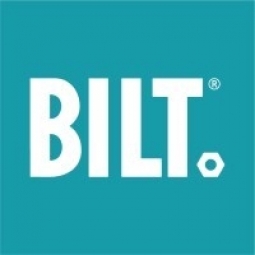Technology Category
- Application Infrastructure & Middleware - Database Management & Storage
- Infrastructure as a Service (IaaS) - Cloud Storage Services
Applicable Industries
- Consumer Goods
- Retail
Applicable Functions
- Sales & Marketing
Use Cases
- Virtual Prototyping & Product Testing
Services
- Training
About The Customer
TRINITY is a customer-centric company committed to delivering quality products for home, commercial, and industrial storage and organization. Their products are sold online and through many major retailers. They manufacture a wide range of products, from smaller, easy-to-assemble items to larger, more complex items such as wall racks, cabinets, patio sets, tool chests, work tables, and benches. These larger items can be intimidating for customers to assemble and difficult to return due to their size and weight. TRINITY is committed to improving the customer experience and reducing the need for product returns and customer service calls.
The Challenge
TRINITY Industries International, an eco-friendly storage, organization, and home solutions company, was experiencing rapid sales growth but faced a challenge in managing customer support costs. The company's leadership team identified that assembly-related issues were the primary reason for product returns. Despite many of their products being easy to assemble, they also manufactured larger items such as wall racks, cabinets, patio sets, tool chests, work tables, and benches. These items were intimidating to assemble for customers and even more difficult to return due to their size and weight. TRINITY aimed to improve their out-of-the-box customer experience beyond paper manuals or videos. They wanted to ensure their assembly and installation instructions were accessible, comprehensive, and straightforward to reduce returns, minimize customer service calls, and address negative reviews.
The Solution
To address this challenge, TRINITY partnered with BILT to provide a 3D interactive instruction option. The BILT app provides Intelligent Instructions® that are voice and text guided. It begins with a product overview, showing users how many people and how much time the project will take, as well as the tools required and parts included. The app guides the project step by step at the user’s own pace. Customers can tap on a part for more information, zoom in for clarity, and rotate the 3D animations to get the right angle. The app also allows consumers to register their products, access warranties, and leave ratings and reviews. TRINITY promoted the BILT app on their website, retail marketing channels, boxes, and paper instruction manuals to ensure customers were aware of this enhanced customer experience.
Operational Impact
Quantitative Benefit

Case Study missing?
Start adding your own!
Register with your work email and create a new case study profile for your business.
Related Case Studies.
.png)
Case Study
Improving Vending Machine Profitability with the Internet of Things (IoT)
The vending industry is undergoing a sea change, taking advantage of new technologies to go beyond just delivering snacks to creating a new retail location. Intelligent vending machines can be found in many public locations as well as company facilities, selling different types of goods and services, including even computer accessories, gold bars, tickets, and office supplies. With increasing sophistication, they may also provide time- and location-based data pertaining to sales, inventory, and customer preferences. But at the end of the day, vending machine operators know greater profitability is driven by higher sales and lower operating costs.

Case Study
Improving Production Line Efficiency with Ethernet Micro RTU Controller
Moxa was asked to provide a connectivity solution for one of the world's leading cosmetics companies. This multinational corporation, with retail presence in 130 countries, 23 global braches, and over 66,000 employees, sought to improve the efficiency of their production process by migrating from manual monitoring to an automatic productivity monitoring system. The production line was being monitored by ABB Real-TPI, a factory information system that offers data collection and analysis to improve plant efficiency. Due to software limitations, the customer needed an OPC server and a corresponding I/O solution to collect data from additional sensor devices for the Real-TPI system. The goal is to enable the factory information system to more thoroughly collect data from every corner of the production line. This will improve its ability to measure Overall Equipment Effectiveness (OEE) and translate into increased production efficiencies. System Requirements • Instant status updates while still consuming minimal bandwidth to relieve strain on limited factory networks • Interoperable with ABB Real-TPI • Small form factor appropriate for deployment where space is scarce • Remote software management and configuration to simplify operations

Case Study
Digital Retail Security Solutions
Sennco wanted to help its retail customers increase sales and profits by developing an innovative alarm system as opposed to conventional connected alarms that are permanently tethered to display products. These traditional security systems were cumbersome and intrusive to the customer shopping experience. Additionally, they provided no useful data or analytics.

Case Study
How Sirqul’s IoT Platform is Crafting Carrefour’s New In-Store Experiences
Carrefour Taiwan’s goal is to be completely digital by end of 2018. Out-dated manual methods for analysis and assumptions limited Carrefour’s ability to change the customer experience and were void of real-time decision-making capabilities. Rather than relying solely on sales data, assumptions, and disparate systems, Carrefour Taiwan’s CEO led an initiative to find a connected IoT solution that could give the team the ability to make real-time changes and more informed decisions. Prior to implementing, Carrefour struggled to address their conversion rates and did not have the proper insights into the customer decision-making process nor how to make an immediate impact without losing customer confidence.









